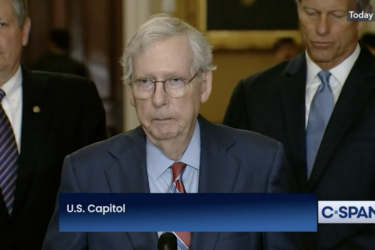 For the second straight year, Minnesota ranks as the best place for seniors, according to a new report, from the United Health Foundation, “America’s Health Rankings Senior Report: A Call to Action for Individuals and Their Communities.”
For the second straight year, Minnesota ranks as the best place for seniors, according to a new report, from the United Health Foundation, “America’s Health Rankings Senior Report: A Call to Action for Individuals and Their Communities.”
Minnesota’s strengths include ranking first for all health determinants combined, which includes being among the top five states for a high rate of annual dental visits, a high percentage of volunteerism, a high percentage of quality nursing home beds, a low percentage of marginal food insecurity, a high percentage of prescription drug coverage, and ready availability of home health care workers.
The state also ranks second for all health outcomes combined, including ranking in the top five for a low rate of hospitalization for hip fractures, a high percentage of able-bodied seniors, a low premature death rate, a low prevalence of full-mouth tooth extractions, and few poor mental health days per month.
Hawaii ranks second followed by New Hampshire, Vermont and Massachusetts. These states rate among the top 10 for many individual metrics and rarely appear in the bottom 10. They are consistently among the top states for health determinants: behaviors, community and environment, and outcomes. Their different mixtures of strengths and weaknesses demonstrate that states can achieve high marks through a variety of approaches according to the report.
On the flip side, Mississippi ranks 50th as the least healthy state for older adults while Louisiana, Kentucky, Oklahoma, and Arkansas complete the bottom five states. Mississippi ranks in the bottom five states for 14 of 34 measures, including the highest percentage of seniors in poverty, a low percentage of seniors who report very good or excellent health, a low percentage of able-bodied seniors, and a high premature death rate. Additionally, the state ranks at the bottom for all health determinants combined, as do the other four lowest-ranking states.
The 34 measures that comprise the rankings in the report include determinants – actions that can affect the future health of the population, and outcomes – that has already occurred either through death or disease.
For a state to improve the health of its older adult population, efforts must focus on changing the determinants of health. Health determinants influence health outcomes of the older adult population in a state, and improving these inputs will improve outcomes over time.
“We commissioned this report to understand and identify ways to improve seniors’ health because Americans are living longer and the senior population will double in size over the next 25 years,” Reed Tuckson, M.D., senior medical adviser to United Health Foundation said in a press release. “It’s time to shift our focus from how long Americans are living, to how well we’re living. We want this report to encourage seniors and the people in their lives to be more active, to talk about end-of-life plans and to live the best lives we all can.”
The statewide measures used in “America’s Health Rankings Senior Report” reflect the condition of the “average” older adult and can mask differences within the state. When the measures are examined by race/ethnicity, gender, geographic location, and/or economic status, significant differences can emerge that are important for states to recognize. The report does not contain an explicit health disparity measure. Instead, a few individual measures are examined by race/ethnicity, gender, urban/city, education, and income to illustrate variation within states. Obesity, physical inactivity, and health status were also examined.
Other key findings include:
- seniors are more active compared to last year, with physical inactivity declining from 30.3 percent of the senior population to 28.7 percent.
- preventable hospitalizations dropped from 66.6 discharges per 1,000 Medicare beneficiaries to 64.9 discharges.
- nursing home care improved, with quality nursing home beds rising from 42 percent of beds rated four or five stars to 46.8 percent.
The largest gap in physical inactivity is between older adults with less than a high school degree (45.4 percent inactive) and those with a college degree (16.8 percent inactive). The racial differences in physical inactivity among seniors mirror the racial differences in obesity among seniors.
Health status is strongly divided along income lines. Over 60 percent of older adults in the highest income group indicate that their health is very good or excellent. In contrast, slightly more than one-quarter of seniors in the lowest income group report that their health is very good or excellent. A similar gap is visible between seniors in the highest and lowest educational attainment groups
“Chronic illnesses such as obesity, diabetes and heart disease not only affect seniors’ overall health but place pressure on families, caregivers and our health care system,” said Tuckson. “These challenges will only intensify as the senior population continues to grow. It’s critical that we work together – individuals, families, communities, states and the health care system– to develop solutions that address chronic illness among seniors and lay the groundwork for improved health for generations to come.”
The report is intended to promote widespread awareness of the breadth of issues seniors face, where states stand on important public health measures and drive action towards activities shown to improve population health, according to the foundation. They hope it will serve as a springboard for programs and funding by policymakers, health professionals and the general public.









